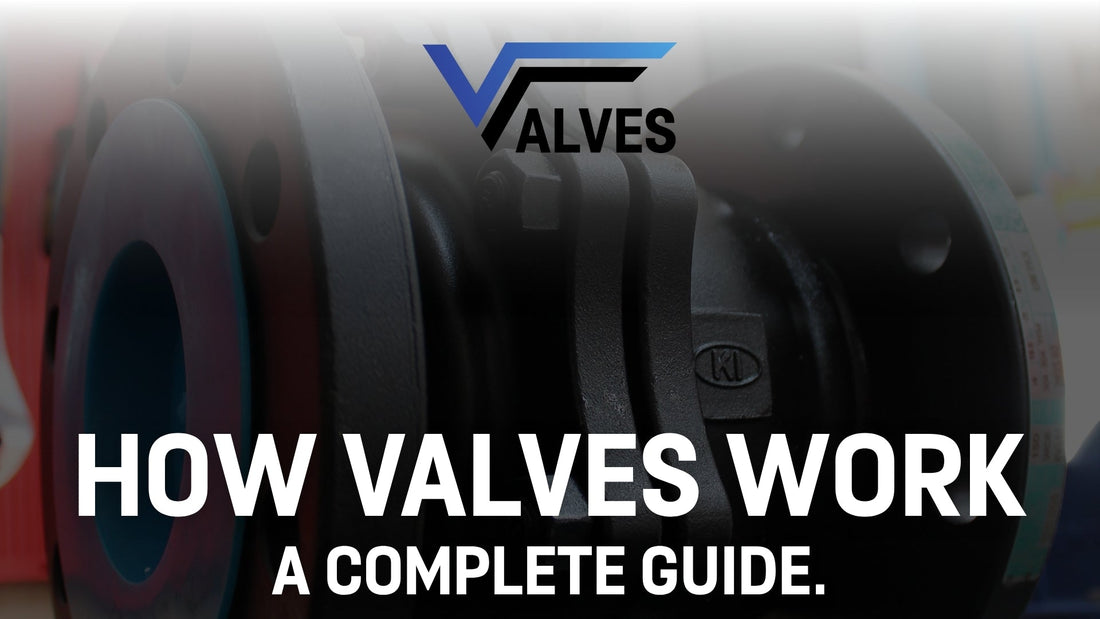
How Valves Work – A Complete Guide
Share
Valves play a vital role in controlling the flow of liquids, gases, and steam across countless industries. From oil and gas to water treatment and manufacturing, understanding how valves work is crucial for engineers, operators, and buyers who rely on efficient and reliable fluid control.
But while valves come in many different shapes, sizes, and designs, the basic principle remains the same: they regulate, direct, or shut off flow through a system.
In this blog, we’ll break down the core function of valves, explain the working mechanisms of the most common valve types, and highlight where and why they’re used. By the end, you’ll have a clear understanding of how valves work and their importance in industrial and commercial applications.
What Is a Valve?
At its most basic level, a valve is a mechanical device that opens, closes, or partially obstructs the passage of fluid within a pipeline. When we ask how valves work, the answer comes down to three functions: stopping flow, allowing flow, or regulating flow. Valves achieve this through internal components such as discs, balls, gates, plugs, or diaphragms, all designed to handle different pressures, temperatures, and media.

The Core Principle of How Valves Work
The principle behind how valves work is relatively straightforward. A valve contains a body that houses the passage of fluid, an actuator or handle to control movement, and an internal element that adjusts the opening. When the valve is open, fluid flows freely; when it’s closed, the flow is completely blocked. In partially open positions, the valve can throttle or regulate flow, allowing precise control for processes that require accuracy.
The way this principle is achieved depends on the valve type:
Ball Valves – Use a rotating ball with a hole through the middle to allow or stop flow.
Gate Valves – Employ a sliding gate that moves up and down to control passage.
Globe Valves – Use a movable plug that regulates flow with high precision.
Butterfly Valves – Feature a rotating disc that turns to control the amount of flow.
Check Valves – Automatically prevent backflow by using pressure differences.
Each of these types works slightly differently, but all share the same goal: managing flow in the safest and most efficient way possible.

How Different Valves Work in Practice
Understanding how valves work also means looking at their real-world applications. For example, ball valves are common in water and gas systems where fast shut-off is essential, while globe valves are preferred in steam systems where accuracy is critical.
Check valves play an important role in pumping stations by preventing reverse flow, protecting equipment from damage.
Butterfly valves, thanks to their compact design, are often used in large-diameter pipelines for water treatment or chemical applications.
Meanwhile, gate valves are best suited for isolation tasks, where full flow or no flow is required.
By studying these variations, it becomes clear that knowing how valves work directly influences the success of a system’s performance and safety.
Why Understanding How Valves Work Matters
Whether you’re an engineer selecting the right valve for a project, a maintenance team ensuring safe operation, or a buyer comparing specifications, knowledge of how valves work ensures you make informed decisions. Valves not only affect process efficiency but also safety, compliance, and long-term operational costs.
By mastering the basics of how valves work, businesses can choose the correct designs, reduce downtime, and maintain smooth operations across critical industries.
Conclusion
Learning how valves work provides the foundation for understanding industrial flow control.
From ball and gate valves to butterfly and check valves, each type offers unique advantages, but all share the same mission: managing flow safely and effectively. With the right knowledge, you can select, operate, and maintain valves that deliver reliability for years to come.

